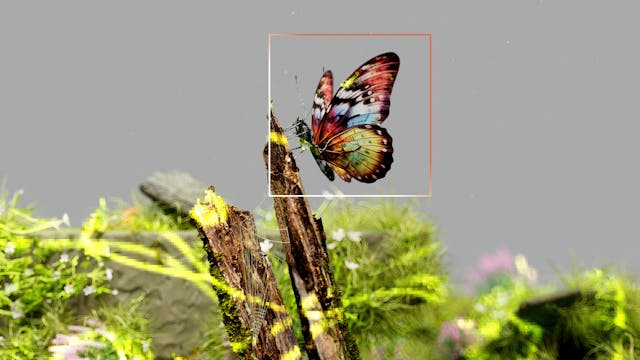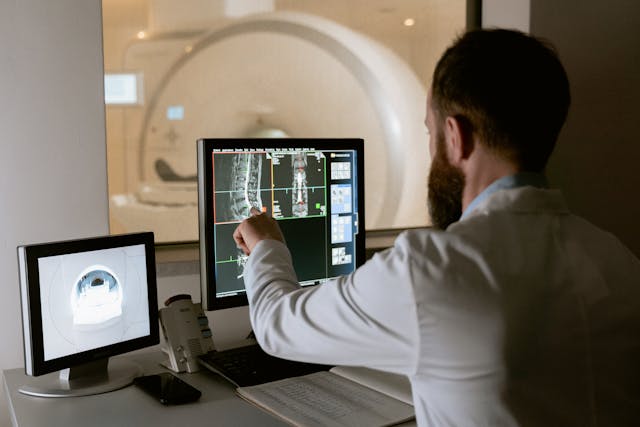AI Image Enhancement
AI imaging enhancement improves the quality of the image assets present within the organization, allowing for preservation, upscaling, and new information derivation. AI image enhancement can merge computer vision and artificial intelligence to generate new meaning for visual assets, while ensuring maximum fidelity and resolution.
AI imaging enhancement tools can also improve existing layouts, assets, and formats through deep learning, GAN, and super-resolution techniques. Firms can use image enhancement solutions to see more visual information, colorize pictures, upscale assets, etc.
Introduction to AI image enhancement
AI image enhancement captures all techniques and strategies to improve the quality of an image or visual medium information. AI upscaling or AI image processing involves the addition of pixels and information into a low-resolution image (generally), and upscaling it to a higher quality image.
Through machine learning and AI algorithms, upscaling can be done on a range of images to help preserve the quality of the image or to bring out new details in them. Firms can leverage a range of AI image enhancer solutions to boost their visual assets, categories, databases, and more.
AI image enhancement techniques
AI image enhancement is generally performed through super-resolution techniques and denoising.
Super resolution
Developers can improve the image quality and finer details through super resolution techniques. The pixel quantity can be improved through AI algorithms to make images more sharper and larger in size. By leveraging GPUs and advanced neural networks, super resolution can produce high-quality images.
Style transfer
The transfer enhancement process involves using the style of one set of images and the information of another to create an enhanced image. This can help improve the aesthetic quality of images that are prepared via the AI enhancer tools.
Image inpainting
Any missing details within the image, through the enhancement process, can be filled using inpainting techniques. Through the predictive capabilities of neural networks, the visual and semantic meaning in the image can be preserved through the enhancement process.

Deep learning in AI image enhancement
Deep learning processes can help AI enhance images based on a range of factors. Most deep learning algorithms leverage CNNs, autoencoders, and GANs to learn from larger data sets to improve visual enhancement of imaging assets.
Convolutional Neural Networks (CNNs)
CNNs are a type of deep learning model or architecture, which are widely used for image processing and scaling for AI enhancement. CNN models can learn information and hierarchical features from images through the training data, and can have layers or kernels that can detect key patterns.
Generative Adversarial Networks (GANs)
Through unsupervised learning, GANs can create new images based on understanding noise and random sampling better. GANs can be helpful in generating higher quality images with larger volumes of training data images and are ideal for image synthesis and super-resolution.
Super-resolution techniques
Through super resolution, the resolution or overall quality of the image can be increased generally by a factor of 4X or more. Through machine learning, the image can be made sharper, given greater clarity, and made higher quality.
Single Image Super-Resolution (SISR)
SISR is essentially a computer vision machine learning task that transforms a low resolution (LR) image into a high resolution (HR) image. The quality of the HR image depends on the algorithm and training data for the extraction of the information from the LR.
Multi-Image Super-Resolution (MISR)
In MISR, multiple images of the same perspective for the image are taken at different intervals or positions to provide more information when referenced against a single image. A composite high-resolution image can be created using this technique.

Image denoising and colorization
Image denoising removes the noise from the resultant picture, while also maintaining much of the quality and information from the original image. It can be represented as follows -
Observed Image (Y) = The Original Image (X) + Gaussian Noise (N)
The noise from the image is isolated and removed while preserving the well exposed and high contrast regions. Through edge detection and preservation, the finer details in the image are preserved to produce the final output image.
Key processes such as colour enhancement, colour correction, and contrasting can be performed within this stage. A multiresolution wavelet approach is used to identify the details within the image and ensure that the right colours are used to amplify the photo.
Industry use cases for AI enhancement
There are several industry use cases for AI photo enhancer solutions and tools, designed with enterprise needs in mind.
Commercial photo enhancement
A key application for AI image enhancement is in commercial photo improvement. Imaging and video assets can be improved for quality, preservation, and enhancing meaning. Firms can use commercial AI enhancement for marketing, collaterals, internal use, as well as for product research purposes.
Ecommerce
Firms can improve their ecommerce product images, as well as provide references for use, application, and varieties using AI image processing and enhancement. Customers can get a better sense of how well they like the product through online AI image enhancement.
Satellite imaging
Satellite imaging enhancement can remove noise and distortion, as well as enhance the minor details present in longer distance shots. AI is also then used to sort and organize various images for military, commercial, and satellite surveying options.
Medical imaging
Through medical imaging enhancement, AI tools can help doctors understand specific imaging tests better. From developing new biomarkers, through AI vision, and detecting tests at a faster pace, AI imaging enhancement can help medical enterprises improve diagnostics.

Challenges to AI image enhancement
It is vital to understand the core challenges with using an AI photo enhancer or image quality enhancement tool through artificial intelligence.
Data quality
A key challenge within the enhance image quality tools domain is to preserve the data quality. Firms can improve image quality through the AI software solution, but will have to deal with challenges in resource optimization, large image quality management, technical issues in real-time processing of images, etc.
Computational complexity
The image quality enhancer will be able to improve low quality images based on the training data and the algorithm. There may be key scalability challenges for upscaling image resolution without losing quality.
Ethical considerations
There may be ethical considerations about storing, managing, and changing images that are used for personal and business needs, such as portrait photos, sensitive images, protected product images, etc.
Ensuring transparency and authenticity
Image quality enhancer tools will have to become more transparent in their operational capabilities, to prevent black-box or hallucinations, when creating enhancement for various industry purposes.
Future advancements in AI image enhancement
Image enhancer and photo enhance tools can emerge more resource optimized by using multiple integration and processing solutions.
Better integration with software tools
AI image enhancement can integrate with other applications directly to provide higher quality output for captured and stored images.
Real time enhancement
The long-term future of AI image enhancement can be in ecommerce, retail, logistics, and quality testing, wherein there may be real time processing and enhancement of images.
Greater governance
There may be more refined tools to help understand ethical and legal considerations when it comes to enhancing images through AI governance tools.
Faster processing of images
The processing of images through AI should become faster through better training data, algorithms, testing parameters, and resource management solutions.
FAQs
What are image enhancement AI data management best practices?
The data sources should be diverse, transformed properly, and managed effectively. Data from APIs, data centres, cloud storage, and other sources should be updated regularly to ensure optimal training data effectiveness.
What are consumer use cases for AI image enhancement?
End users can use AI image enhancement for improving pixelated images, old family photos, upscale images of their captures, and improve image sizes. They can paste image snippets of old photos and get wider resolutions, as well as enhance photo libraries.
Does deep learning for AI image enhancement require significant data?
Yes, deep learning and CNNs will require a significant training data size as well as a diverse range of data sets to enhance image output through photo enhancer tools.